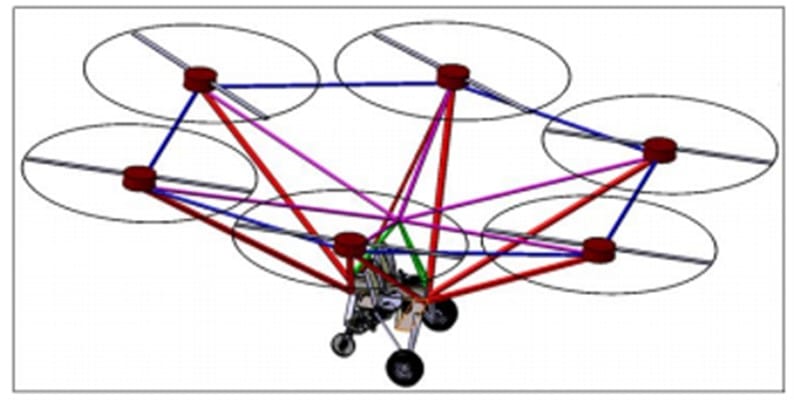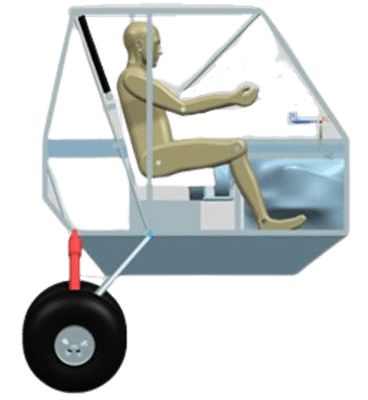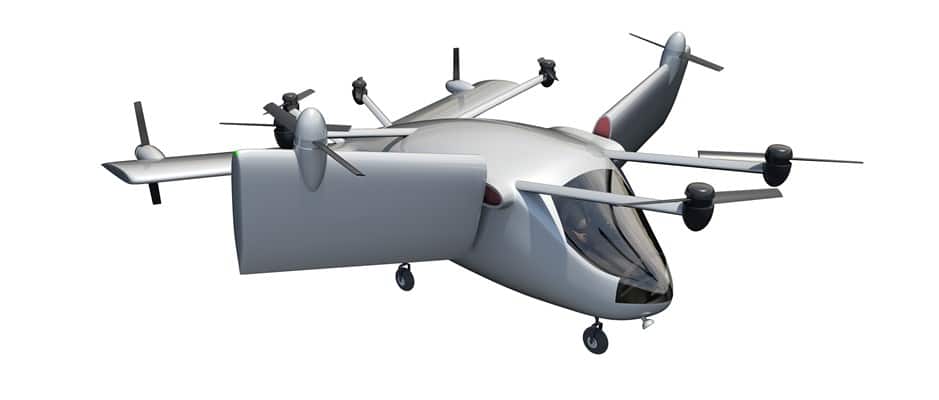Historique du projet
Le projet Mini-Bee a été lancé en janvier 2015 pour explorer le potentiel du transport aérien individuel. En 2022/2023, il s’est transformé en une initiative dynamique de collaboration en matière de R&D impliquant à la fois des institutions académiques et des partenaires industriels.

Lors du salon du Bourget 2015, la première maquette du Mini-Bee a été présentée et a reçu un accueil enthousiaste. Par la suite, des études menées par plusieurs universités ont pris forme et le TRL1 a été atteint en juin 2016.
Au cours de l’été 2017, le projet a atteint le TRL2 et a été à nouveau présenté au salon du Bourget. Avec la participation de plus de 15 universités et 10 acteurs industriels, le TRL3 a débuté peu après.
En 2018, l’équipe a réalisé des progrès significatifs dans les systèmes de propulsion et la configuration hybride. Une maquette grandeur nature a été construite, permettant de valider l’ergonomie et d’affiner l’aménagement intérieur.
En 2019, le Mini-Bee a été dévoilé au public lors du salon du Bourget. Avec son design futuriste et son architecture électrique-hybride innovante, l’avion a attiré l’attention et les éloges.

Le projet prend de l’ampleur. Les ingénieurs, les concepteurs et les spécialistes de la propulsion unissent leurs efforts pour affiner la structure de l’avion, la gestion de l’énergie et les systèmes de contrôle.
Mini-Bee n’était plus un simple prototype ; il était devenu le symbole d’une innovation avancée et collaborative dans le domaine de l’aviation électrique VTOL.
Mini-Bee Hybrid VTOL pour les ambulances aériennes
Révolutionner la réponse aux urgences médicales
Les urgences médicales exigent un transport rapide et fiable. Les ambulances terrestres sont confrontées à des problèmes de circulation et d’infrastructure, tandis que les hélicoptères sont coûteux et d’accès limité. Le Mini-Bee Hybrid VTOL offre une nouvelle solution audacieuse, combinant la flexibilité d’un hélicoptère avec la portée et l’efficacité d’un aéronef à voilure fixe.
Équipé de systèmes électriques et de combustion, le Mini-Bee Hybrid VTOL garantit des émissions réduites, une plus grande autonomie et des performances optimales. Il peut atteindre rapidement les patients dans les zones urbaines denses ou les régions éloignées, fournissant des soins opportuns là où ils sont le plus nécessaires.
L’appareil peut accueillir jusqu’à quatre occupants, y compris des patients et des médecins, et comprend de l’espace pour l’équipement essentiel. Son pilote automatique et son avionique assurent une navigation de précision dans les scénarios les plus complexes.
Le concept est né en 2015 d’une mission visant à améliorer les interventions d’urgence dans les zones urbaines et mal desservies. Après des essais et des simulations rigoureuses, le VTOL a reçu des certifications et a été déployé dans des scénarios médicaux réels.

Depuis son lancement, le Mini-Bee Hybrid VTOL a reçu de nombreux éloges, non seulement dans le domaine de la santé, mais aussi dans les secteurs du sauvetage, de l’armée et de l’application de la loi.
Cet avion représente ce qui est possible lorsque l’innovation technique rencontre l’urgence du monde réel.
Le projet Mini-Bee fonctionne sous une licence Lesser Open Source, ce qui favorise une collaboration transparente. Toute la documentation relative aux composants open-source est accessible via le wiki officiel :
Intéressé par l’effort de développement plus large ? Visitez le site :
https://www.collaborativebee.com
https://www.technoplane.com
Historique des projets de multicoptères hybrides VTOL
Les multicoptères hybrides VTOL combinent la portance verticale des hélicoptères avec la vitesse et le rayon d’action des aéronefs à voilure fixe. Ces systèmes ont évolué depuis les premiers concepts tels que l’autogire (1923) et l’hélicoptère (1939) jusqu’aux drones hybrides modernes d’aujourd’hui.
Ces dernières années ont vu une explosion du développement des VTOL hybrides pour la défense, la livraison, l’agriculture et le transport urbain, alimentés par une propulsion électrique ou hybride et souvent pilotés de manière autonome.

Les configurations hybrides permettent de décoller verticalement dans des espaces restreints et de croiser horizontalement avec une plus grande efficacité. De la surveillance de l’environnement aux opérations tactiques, les VTOL hybrides redéfinissent la flexibilité des missions aériennes.
Mobilité aérienne urbaine : La prochaine frontière
Les technologies de mobilité aérienne urbaine (UAM) offrent une alternative plus propre et plus rapide aux transports terrestres encombrés. Grâce à l’énergie électrique et à la portance verticale, les avions eVTOL promettent de révolutionner la logistique urbaine et le transport de passagers.
- Des temps de trajet plus courts
- Vol à faibles émissions
- Fonctionnement autonome
- Infrastructure évolutive

L’innovation collaborative
Mini-Bee est le fruit d’une collaboration ouverte entre chercheurs, développeurs, ingénieurs et rêveurs. Ensemble, ils construisent la prochaine génération de systèmes de mobilité verticale grâce à la propulsion hybride et à l’avionique avancée.
Plus qu’un concept, Mini-Bee est une déclaration. Un engagement en faveur d’une mobilité aérienne plus durable, plus accessible et plus adaptable pour le monde de demain.
Mini-Bee est plus qu’un concept, c’est une déclaration. Un engagement en faveur d’une mobilité aérienne plus durable, plus accessible et plus adaptable pour le monde de demain.
